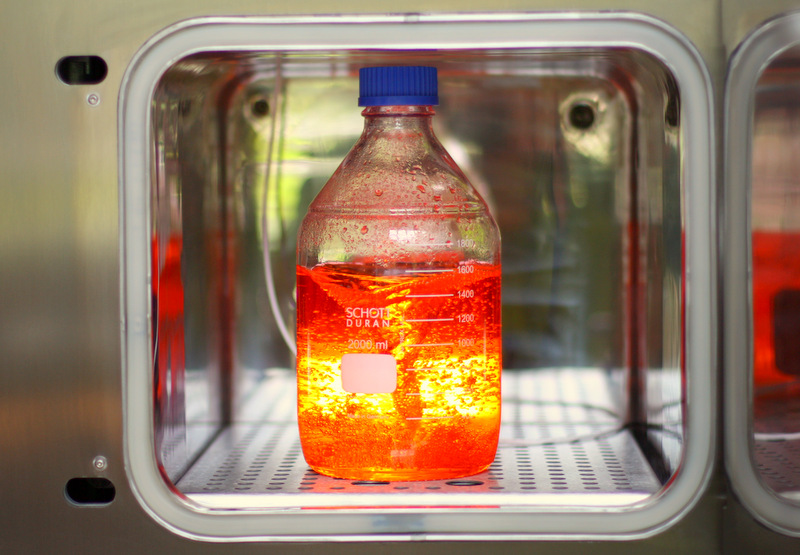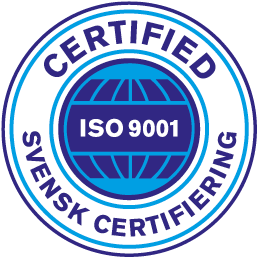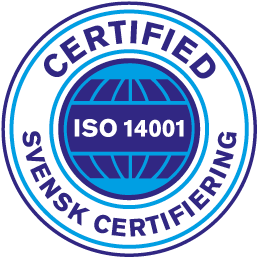Autoclaves and Sterilizers made by ZIRBUS technology

Ring 042-300 91 30 eller maila info@labteamet.com
The stand-alone autoclaves HST 50/75 and HST 50/100 are converted into the Labstar 150 and the
Labstar 200. These autoclaves are now part of the successful Labstar series as new table-top units with an optional underframe.
Further sizes will be available soon:
| Chamber Dimensions |
|
| Labstar 100 | Ø = 500mm; D= 500mm |
| Labstar 295 | Ø = 750mm; D= 670mm |
| Labstar 430 | Ø = 750mm; D= 970mm |
| Labstar 560 | Ø = 750mm; D= 1270mm |
| Labstar 825 | Ø = 750mm; D= 1870mm |
Made in Germany. Since 30 years Zirbus technology produces autoclaves for laboratories, clinics, production and the pharmaceutical industry with a optimized chamber volume up to 8000 litres. Our full range of Autoclaves are made of stainless steel and probably. Constantly we improve our products according to the needs of our customers.
During the last years the product range was enlarged by steam generators and waste / wash water sterilizers. As a manufacturer of pressure vessels with HPO registration Zirbus technology has the flexibility to realize special requirements of the customer with regard to chamber size and pressure concept in addition to the standard serial products.
| Product | Classification |
|---|---|
| Table Top Autoclaves | 25 – 45 liter volume |
| Vertical Autoclaves | 80 – 150 liter volume |
| Floor Standing Autoclaves | 72 – 770 liter volume |
| Production units | 400 – 8.000 liter volume |
| Wash water sterilization | 60 – 125 liter volume |
As a certified manufacturer according to ISO 9001 with HP0 approval, we also offer the flexibility to respond to your special requests in addition to our series products. We realize special dimensions of the chamber or housing for you, change the pressure parameters as desired or install special components. In doing so, strict adherence to the ISO certification ensures that the quality of the products is assured.
The production of our devices and systems takes place in full at our plant in Bad Grund/Lower Saxony. After the sale, our factory customer service ServTec ensures professional and inexpensive maintenance. Short reaction times ensure fast and qualified help in case of irregularities. Further services such as qualification and validation are also available on request.
Thanks to our own application laboratory Zirbus technology is able to adapt or develop the sterilization processes to your product.
Square sterilization chamber, high-strength and efficient. This results in shorter batch times with simultaneous energy savings. We offer you a 10 year warranty on the inner chamber and the steam boiler. Due to the angular chamber an optimal utilization of the chamber volume is achieved. Compared to a round chamber with the same chamber volume, the loading capacity is approx. 36% higher. Chamber, double jacket and steam generator are completely made of corrosion-free stainless steel 1.4571/ AiSi 316Ti. Housing and support frame are completely made of corrosion-free stainless steel 1.4301/ AiSi 304, which is resistant to all commercially available disinfectants. Additionally, the housing is brushed silk-matt for easy cleaning. All pipelines in contact with steam are made of stainless steel 1.4404/ AiSi 316L and are particle-free insulated. Pneumatically controlled stainless steel valves for long life and low operating costs. Touch screen control for maximum variability and easy operation. All installed components come from renowned manufacturers, which guarantees a spare parts supply of more than 10 years. Retrofitting of options is still possible after delivery.
Used for sterilisation of small amounts of liquids, solid material and litter. Equipped with the technology of the large devices. Not suitable for pharmaceutical use, according to EU-GMP regulations, and as pass-through autoclave.
Due to construction, i.e. vertical loading and unloading, this autoclave is especially suitable for sterilisation of light weight items, such as litter in sterilisation bags. A loading assistant enables a back-friendly ergonomic loading of items up to 25 kg, such as medium bottle and fermenters, is optionally available.
Suitable for any kind sterilisation. In the compact version, available with usable chamber height up to 850 mm. Suitable as production and pass-through-autoclave for the pharmaceutical industry with gas-proof separation or as autoclave for sterilisation of nutrient media at university laboratories.
These are customized autoclaves. They may be used for pit installation which enables ground-level loading. They may also be used for sterilisation of ampoules and bags by hot-water-sprinkling.

The main advantage of round autoclave compared with angular autoclaves is the fact that pressure distributes equally throughout a round chamber. Due to modern production and manufacturing methods, an angular chamber may endure the same amount of pressure.
Further information on autoclaves via wikipedia Wikipedia information
Fitted with a quick-release locking mechanism, an autoclave (Latin for “self-locking”) is a pressure vessel used for sterilizing instruments, liquids and other utensils. The contents of an autoclave are subjected to high pressure and heated with steam to temperatures of 121 degrees Celsius or higher for a defined period of time depending on the size and type of the materials involved. The autoclave was invented in 1879 by French microbiologist Charles Chamber (who also collaborated with Louis Pasteur), and was preceded by the steam digester, invented in 1679 by French physicist Denis Papin. Two main methods are now used for autoclaving or sterilizing: the vacuum method, which involves mechanically evacuating air and applying an inflow of steam for heat, and the downward displacement or gravity method, in which air is forced out by saturated steam (the pressure cooker principle). Autoclaves are also sometimes referred to as “steam sterilizers” as a result.
Today’s autoclaves come in many different sizes and designs, and are used in the fields of microbiology, medicine, dentistry, mycology, veterinary medicine and prosthetics. Production-scale versions are used in the food industry as a way of increasing the shelf life of foods without refrigeration, and the electronics industry uses these instruments for creating bubble-free adhesive bonds in touchscreens. Pressure vessels even find their way into the construction materials industry, where they are used for curing lime sand brick and concrete. In research institutes and universities, specially developed laboratory autoclaves are used for medical, pharmaceutical and biotech research. Modern laboratory autoclaves have a steel, rectangular chamber, and high-pressure autoclaves withstand pressures of 150 bar (see high-pressure autoclaves). In order to minimize contamination from microorganisms, special requirements apply to medications manufactured in the pharmaceutical industry, where the sterility of production equipment and clean room clothing is a major concern. Instrument disinfection and sterilization are indispensable procedures in hospitals and medical clinics as well, where they ensure safe practices. Combining high temperatures and pressure to adequately sterilize instruments makes autoclaving an extension of hot air sterilization techniques, which sterilize instruments with heat. Some instruments cannot withstand high temperatures, however, and elevating the pressure makes it possible to treat instruments at lower temperatures.
Autoclaves are increasingly being used in waste disposal processes as a way of treating and sterilizing garbage and hospital biohazard waste, neutralizing potentially infectious materials by applying steam under pressure. Temperatures of 121 or 134 degrees Celsius will destroy bacteria, viruses, fungi and spores, and the very few organisms—prions are one example—that can survive these temperatures must be denatured by other means. Other sterilization techniques must also be used for materials such as certain plastics that are unstable at high temperatures. Once treated in an autoclave, waste is no longer infectious and can be disposed of in an environmentally safe manner. Regular performance testing is mandatory for autoclaves used predominantly for sterilization.

LEASING / HYRA / AVBETALNING
Vårt samarbete med Svea gör att du snabbt och enkelt får förslag på finansiering som passar dina behov Finansiering upp till 100%. Ni slipper binda ert kapital. Läs mer om leasing och allriskförsäkring.
Investera nu i rätt utrustning, för att säkra er konkurrenskraft, kapacitet och tillgång till vital utrustning Sprid kostnaden över den tid som utrustningen används. Utrustningen som säkerhet för finansieringen.
STOCKHOLM
LabTeam Scandinavia AB
Finlandsgatan 36
164 74 Kista
Sweden
GÖTEBORG
LabTeam Scandinavia AB
Stora Åvägen 21
436 34 Askim/Göteborg
Sweden

LEASING / HYRA / AVBETALNING
Vårt samarbete med Svea gör att du snabbt och enkelt får förslag på finansiering som passar dina behov Finansiering upp till 100%. Ni slipper binda ert kapital. Läs mer om leasing och allriskförsäkring.
ANMÄL DIG TILL VÅRT NYHETSBREV
Din epost (obligatorisk)





För att ge de bästa upplevelserna använder vi teknik som cookies för att lagra och/eller komma åt enhetsinformation. Genom att godkänna dessa tekniker kan vi behandla data som surfbeteende eller unika ID:n på denna webbplats. Att inte samtycka eller återkalla samtycke kan påverka vissa funktioner och funktioner negativt.
Denna förfrågan gäller endast för denna produkt. Vill du göra förfrågningar för flera produkter samtidigt så använd knappen “Förfrågan (flera produkter)” på respektive produktsida istället och samla dina produkter under “Mina produkter” innan du skickar din förfrågan.
Har du lagt till produkter till “Mina produkter” så glöm inte skicka iväg din pris- eller produktförfrågan också. Skapa gärna ett konto så sparas alla dina förfrågningarna under “Mitt konto” sidan.